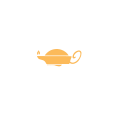Nurse Practitioners as safe as physicians in prescribing medication for older patients, study finds
Click Here to read
Role of Nurse Practitioners in Caring for Patients With Complex Health Needs (2020)
Click Here to read
Key findings: Nurse practitioners are caring for patients with complex needs at rates that match or exceed their physician colleagues.
Effectiveness for introducing nurse practitioners in six long-term care facilities in Québec, Canada: A cost-savings analysis (2020)
Click Here to read
Key findings: Important cost savings were generated from the reduction of adverse events after the implementation of nurse practitioner roles in long-term care.
Outcomes of primary care delivery by nurse practitioners: Utilization, cost, and quality of care (2020)
Click Here to read
Key findings: Patients reassigned to NPs experienced similar outcomes and incurred less utilization at comparable cost relative to MD patients. NPs may offer a cost effective approach to addressing anticipated shortages of primary care physicians.
The Impact of Nurse Practitioners on Hospitalizations and Discharges from Long-term Nursing Facilities: A Systematic Review. Healthcare. (2020)
Click Here to read
Key findings: Utilization of NPs as primary care providers resulted in decreased unnecessary hospitalizations, increased access to healthcare, and improved health outcomes.
NPNZ are Committed to supporting the development of knowledge about the role and benefits of the NP workforce in new zealand
We are happy to consider requests for access to our membership as a research cohort following a brief research proposal, copied to the Secretary
Cochrane Review (2018) - Nurses as substitutes for doctors in primary care
 Laurant-2018-Nurses as substitutes for doctors (1.23MB)
Laurant-2018-Nurses as substitutes for doctors (1.23MB)
11 May 2018
Barriers and Enablers to Registered Nurse prescribing in General Practice: A survey of Nurse practitioners perspectives
 RN Prescribing in General Practice (0.68MB)
RN Prescribing in General Practice (0.68MB)
A brief summary of the findings:
- There were 36 participants identifying as NPs working in NZ general practice that participated in the survey, 44% urban, 36% urban/rural, 19% rural, with a mean experience in general practice/prescribing of 2.8 years.
- 83% had previously supported/supervised/mentored other nurses.
- Participants indicated a mean percentile of 72% supportive of the RN designated prescriber role within general practice, with a mean 69% considering education and training requirements as appropriate/adequate.
Interestingly the practice setting of the participant (eg rural) did not affect their support of the role and training/education adequacy (I had expected the rural based NP's would indicate more support for the role)
Potential advantages were posed and agreement was as follows:
- Improved patient access to the medications/services they need - 86%
- Increased job satisfaction - 80%
- Improved knowledge of medication - 80%
- Improved autonomy/accountability - 72%
- Improved clinical assessment skills - 72%
- A possible step toward becoming an NP - 67%
- Increased continuity of care - 58%
- The minority (44%) indicated improved team dynamics
Potential disadvantages were posed and agreement was as follows:
- confusion of roles - 86%
- increased responsibility/role not reflected (e.g longer appointment times, remuneration) - 64%
- less RNs transitioning to NP - 50%
- risk of medication errors with multiple prescribers - 50%
- fragmentation of service provision - 39%
- increased team conflict - 30%
The four top barriers (from a provided list) were: confusion of nursing roles/scopes, access to supervisor (as demand increases), lack of financial incentive/unknown remuneration, limited patient understanding of the role The four top enablers (from a provided list) were: accessible ongoing professional development, whole of system/GP support, understanding of scope of role by patient/other health professionals, support of clinical team.
Nurse Practitioner Training Programme Evaluation
The evaluation report from Malatest International of the Nurse Practitioner Training Programme (NPTP) is now available on the Ministry’s website
https://www.health.govt.nz/publication/evaluation-nurse-practitioner-education-programme
Based on the report's findings Health Workforce New Zealand and the Office of the Chief Nurse welcomes feedback from the nursing profession, employers, training providers and other stakeholders. There are a number of questions for you to consider when giving feedback,
https://www.health.govt.nz/our-work/nursing/nurses-new-zealand/nurse-practitioners-new-zealand#feedback
Nurse prescribers in England saving NHS millions
10 December, 2015
Non-medical prescribers are saving the NHS in England an estimated annual £777m, which could be increased further by at least £270m a year if more GP practices were to employ them, according to a new report here
Cost-Effectiveness of Nurse Practitioners in Primary and Specialised Ambulatory Care: Systematic Review
Martin-Misener R,Harbman P, Donald F, et al. Cost-effectiveness of nurse practitioners in primary andspecialised ambulatory care: systematic review.
BMJ Open 2015;5:e007167. doi:10.1136/bmjopen-2014- 007167
There is high-quality evidence that nurse practitioners in alternative provider ambulatory primary care roles are cost-effective with patient outcomes that are equivalent to or better than usual care and with lower costs; the evidence for their cost effectiveness in alternative provider specialised ambulatory care roles is promising, but limited by the small number of studies; it was not possible to draw conclusions about the cost-effectiveness of the complementary provider specialised ambulatory care role of nurse practitioners because of the generally low quality of evidence.
The first decade of nurse practitioners in New Zealand: A survey of an evolving practice.
Gagan MJ, Boyd M, Wysocki K, Williams DJ.
Journal of the American Association of Nurse Practitioners. 2014;26(11):612-9.
Background:
Nurse practitioners (NPs) have been registered in New Zealand (NZ) since 2002. This article describes a sample of their practices and outcomes across a variety of healthcare specialties. The PEPPA model was used as a guide for the organization of data, the discussion of findings, and recommendations for the future.
Method:
Two e-mailed surveys of registered NPs (including qualitative and quantitative data) were conducted by the professional organization, NPNZ in 2011 and 2012.
Conclusion:
After 10 years, NPs in NZ demonstrated efficient practice and have produced measurable improved healthcare outcomes.
Implication for practice:
NP practices are continuing to develop and are contributing to increased access to health care and improved health outcomes in NZ.
 Menu
Menu